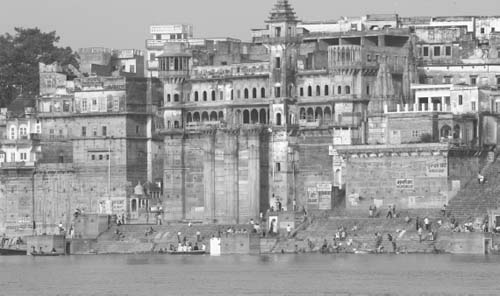HinduismMembership, Community, Diversity |
Are there any Hindu holy cities? |
Hinduism’s sacred cities far outnumber those of any other major religious tradition. All the earth is of divine origin and India stands at the center of that divinity. According to one model there are seven sacred cities, each associated with a divine event. Banaras or Kashi (City of Light) is the home of Shiva. In Ayodhya, Rama set the capital of his realm. Krishna was born in Mathura, and from Hardvar the Ganges begins its journey to the south. These (along with Kanchi, Ujjain, and Dvaraka) form the basic grid of a vast network of sacred geography in which countless other places are sacred for innumerable reasons. All important sacred places are called tirthas, places at which one can cross a river. Four cities function as directional tirthas at the four cardinal points: Badrinath in the north, Rameshwara in the south, Puri in the east, and Dvaraka in the west. According to one mythic narrative, 108 places became sacred by association with the body of Shiva’s wife Sati. After she threw herself on the funeral pyre, a grieving Shiva carried her remains across India, and every place bits of her fell to Earth became a “seat” of the goddess. Every denomination and sect has its favored sacred city. Perhaps the single most important city, one that most Hindus acknowledge as sacred, is Banaras. Though it is particularly holy for Shaivites, Banaras’s spiritual magnetism works on all devout Hindus.

Located on the banks of the Ganges, the holy city of Banaras is the home of Shiva. (Jeremy Richards / Shutterstock.com.)
